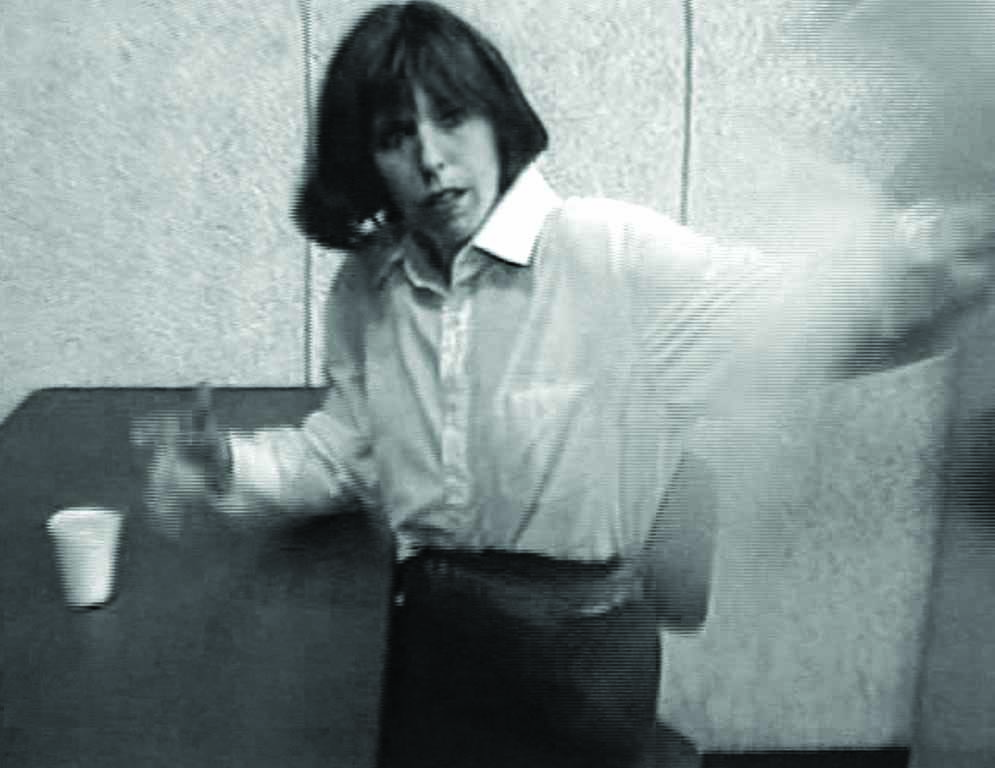Suspicious Futures: Select Video Work, by Susan Britton, is a collection of videos that, to date, have been out of the public eye for more than 15 years. Britton’s work, to be shown at Platform Centre for Photographic and Digital Arts from March 9to April 21, serves almost as a time capsule, a unique look back at the very different world of the 70s and 80s.
Britton’s videos, which vary widely in length and style, cover topics of sex, love, loss, mystery and technology from a dated yet still very relevant point of view. Each video has been restored and offers us a unique chance to look at our world through the lenses of a different time.
Through careful cleaning and restoration, Kim Tomczak and Mark Pellegrino, with the help of interns, brought Britton’s work back into the public eye, uncovering a mirror on the world of the 1970s and 80s, through which we, as an audience, are able to reconnect. Allison Collins, a young curator just completing her masters in Critical and Curatorial Studies at UBC, approached the project with a unique perspective and managed to create a seamlessly structured whole out of the immense body of work Britton had completed years ago.
The process consisted of watching old video tapes, going through everything and doing large amounts of background research, says Collins.
“I’m mostly interested in reclaiming history with this exhibition and making sure that worthwhile, valuable work that was made in Canada is not lost. Presenting it again to viewers will give them an opportunity to rediscover a piece of their own past.”
Starting March 9, a wide variety of Britton’s catalogue will be shown, mixing present with past in intriguing ways. Britton’s work serves not only as a time travel vehicle for those of us who were around to remember those days, but a reminder of subject positions, rhetoric and creative styles from the artistic past as well.
Susan Britton herself will be in attendance, to accompany us as we journey back into Canada’s video memory and to assist us in understanding the ways in which a journey into our past can help us understand both our present and our future, uncertain as the latter may be. Accompanying Britton’s videos will be a previously published, fully illustrated catalogue and a full videography.
Britton’s examination of the future is now a decades-old perspective, something that will perhaps bring into sharp relief what we have and haven’t yet experienced as a species. Including sci-fi concerns, politics and drama, with synthetic beats to help brace some topics, Britton’s work is an adventurous exploration of the unknown and intriguing through personae created by the artist.
In order to explore technology (as both a tool and phenomenon), mass media, ideology and the structures of the art world, Britton created a plethora of personae, mostly played by her, that take on forms that display the issue at hand. The artist’s persona in Why I Hate Communism No. 1 (1976) for example, is subject to the camera held over her as it moves in simulation of missionary position sex. She and her invisible male counterpart discuss ideology, although a conclusion is never reached.
The personae Britton embodies convey both truth and falseness, lending legitimacy to an art world in which female work was usually seen as too personal. In each work, Britton tries on her characters to explore her world, and to speak of her views of art as part of life. Sceptical of life’s trends, Britton harnesses her energies in pursuit of exposing the mix of her personal and political experiences.
Britton’s short works, whether they are two, three or four minutes long, act as vignettes, small glimpses into a past that is unknown to many of us. Her longer works, which may be half an hour or an hour long, are more formal yet still able to play with and engage in their own formality, using apparatus and technology to both help the story along and then dissect it for us.
Susan Britton is a Winnipeg native and studied Advertising Art at Red River College. Britton would eventually drop out of that program and go on to earn her BFA from the Nova Scotia College of Art and Design in 1976. From the time of her graduation until 1986, Britton created many video projects in Toronto and New York that investigate the notions of media, representation and the subject-viewer relationship. Britton’s work, while being indirectly focused on feminism, uses violent and seductive imagery to unravel cinematic allegories. Her work was and continues to be a complex contribution to media production.

